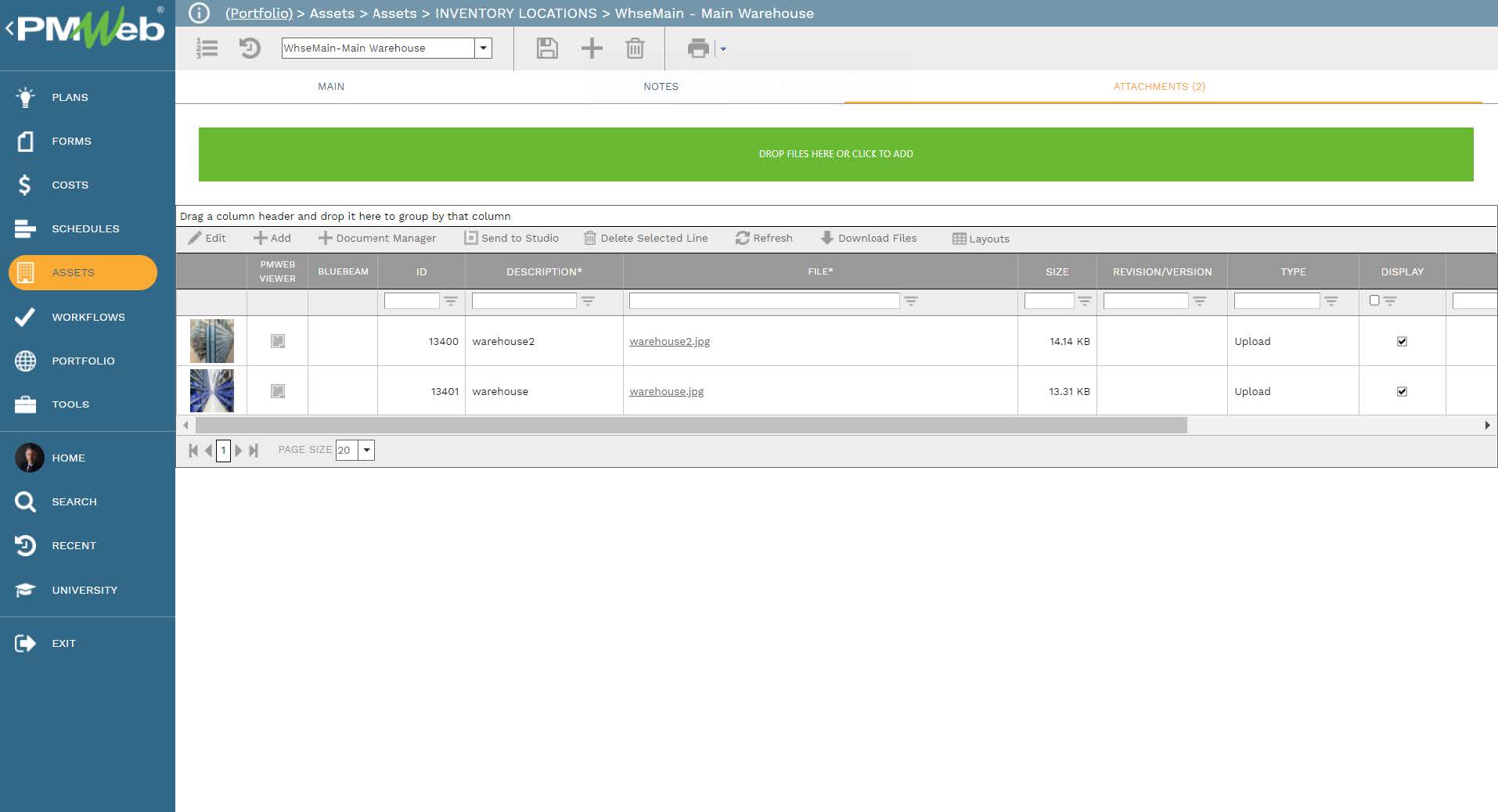One of the requirements for capital construction projects is to establish temporary storage facilities to manage the delivery, storing, and release of material and equipment needed to construct those projects. The location of those storage facilities could be the project site, inside the building being constructed such as basement level, or storage facilities outside the construction site that is either rented or built specifically for the project. The contractor will assign a team that will take responsibility for those storage facilities including the stored inventory.
The contractor wants at all times to have a real-time single version of the truth report on the current status of material and equipment stock in hand. This will be the balance of all stocked material and equipment after adjusting for quantities that had been used on the project, those found to be unusable and to be returned to the supplier, and those moved to other locations whether on the project itself or other locations. The contractor also wants to know the estimated value of the current stock in hand and stored at a specific location or multiple locations.
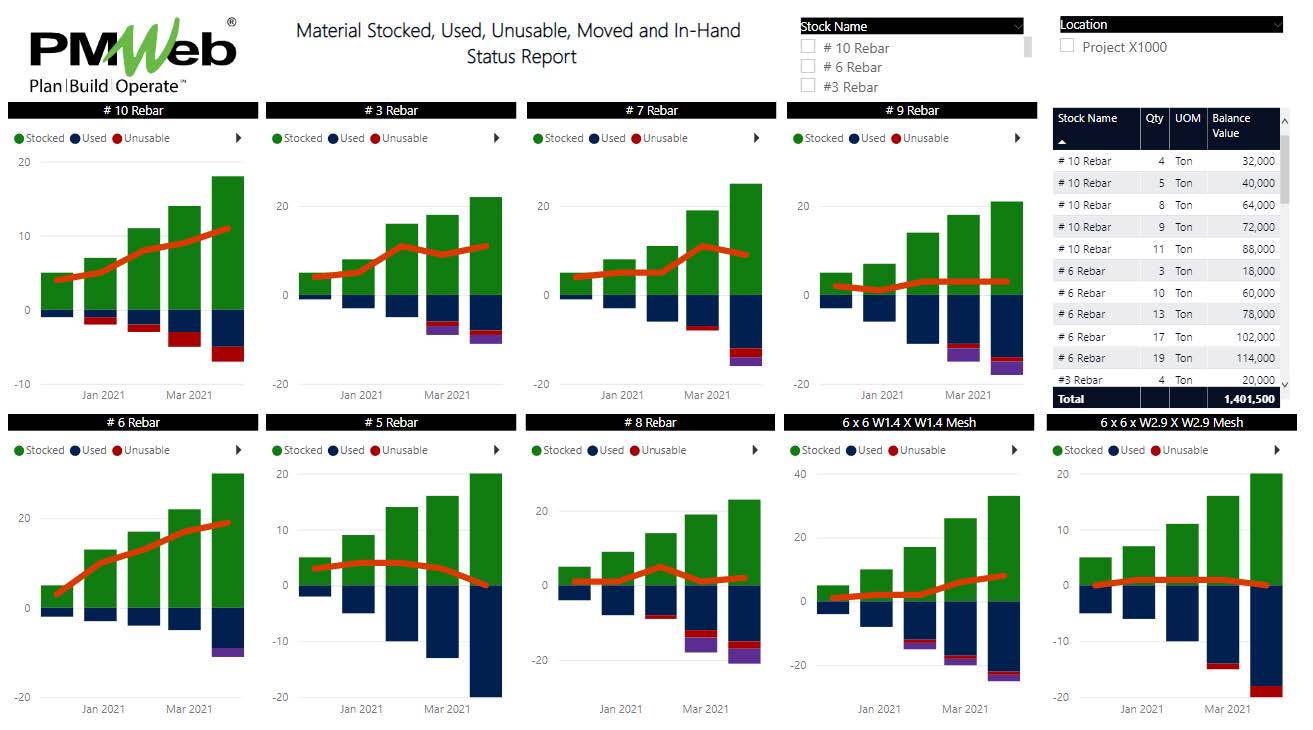
Using Project Management Information System (PMIS) like PMWeb which is also used all other business processes needed to manage the delivery of the capital construction project, will be also used to manage inventory at site storage facilities. PMWeb Inventory allows defining an unlimited number of permanent and temporary storage facilities and links each to their relevant project location. For each location, PMWeb allows defining the sub-locations where material and equipment inventory will be stored.

To ensure that all material and equipment stored at those locations have standard identification to enable consolidating and reporting on inventory across the complete or selected locations, each material or equipment should the PMWeb Item identification. PMWeb item module will be used to create the database of all material and equipment items that could be stored or used on construction projects. The items database will be the same cost database used in developing the project’s cost estimate.
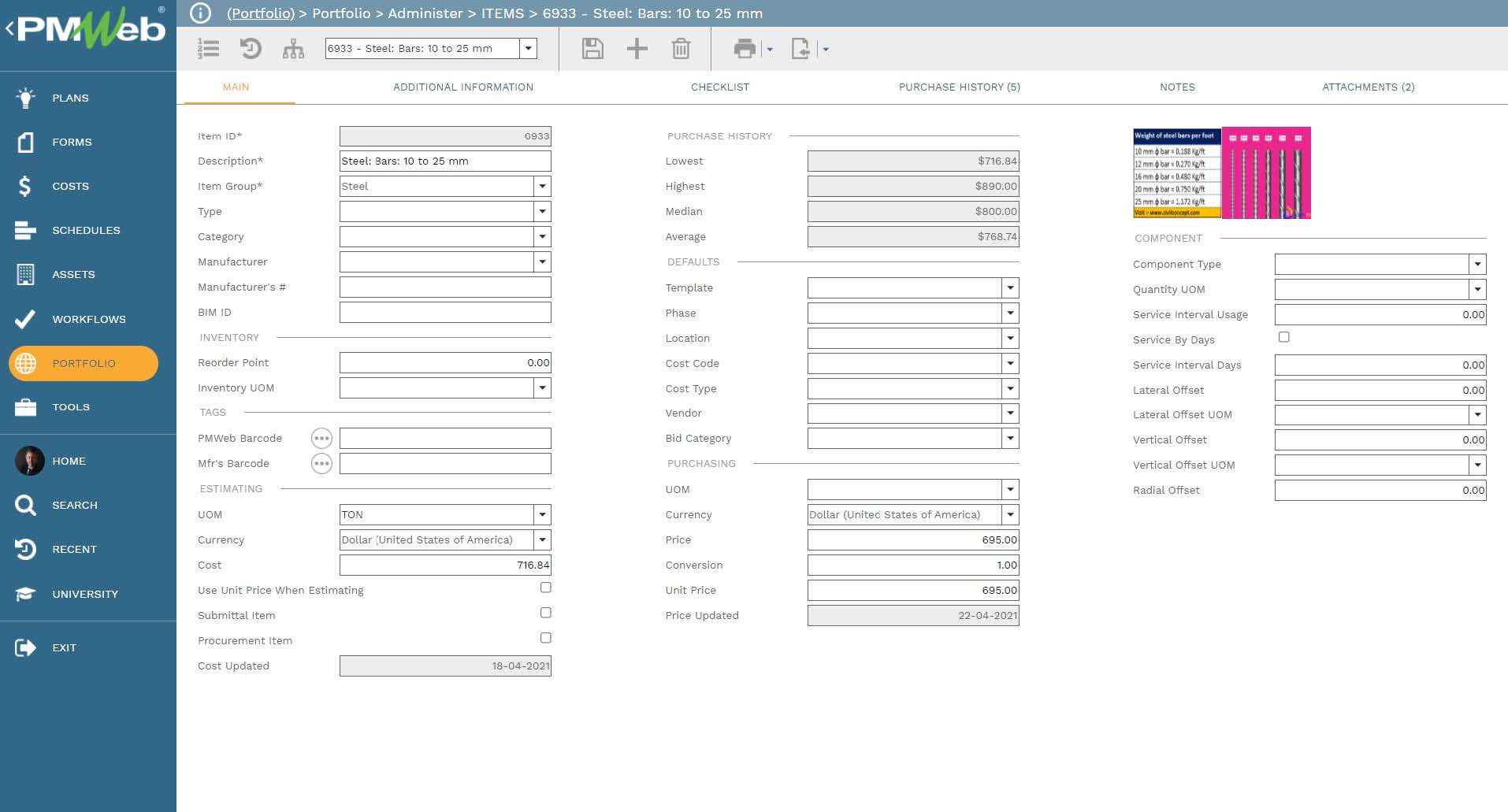
When a material or equipment item is added to a storage location, PMWeb will pick the name of the item and the unit price defined in the cost database. Additional details that detail the quantity received, manufacturer name, lot number, notes, and other particulars to received material and equipment.
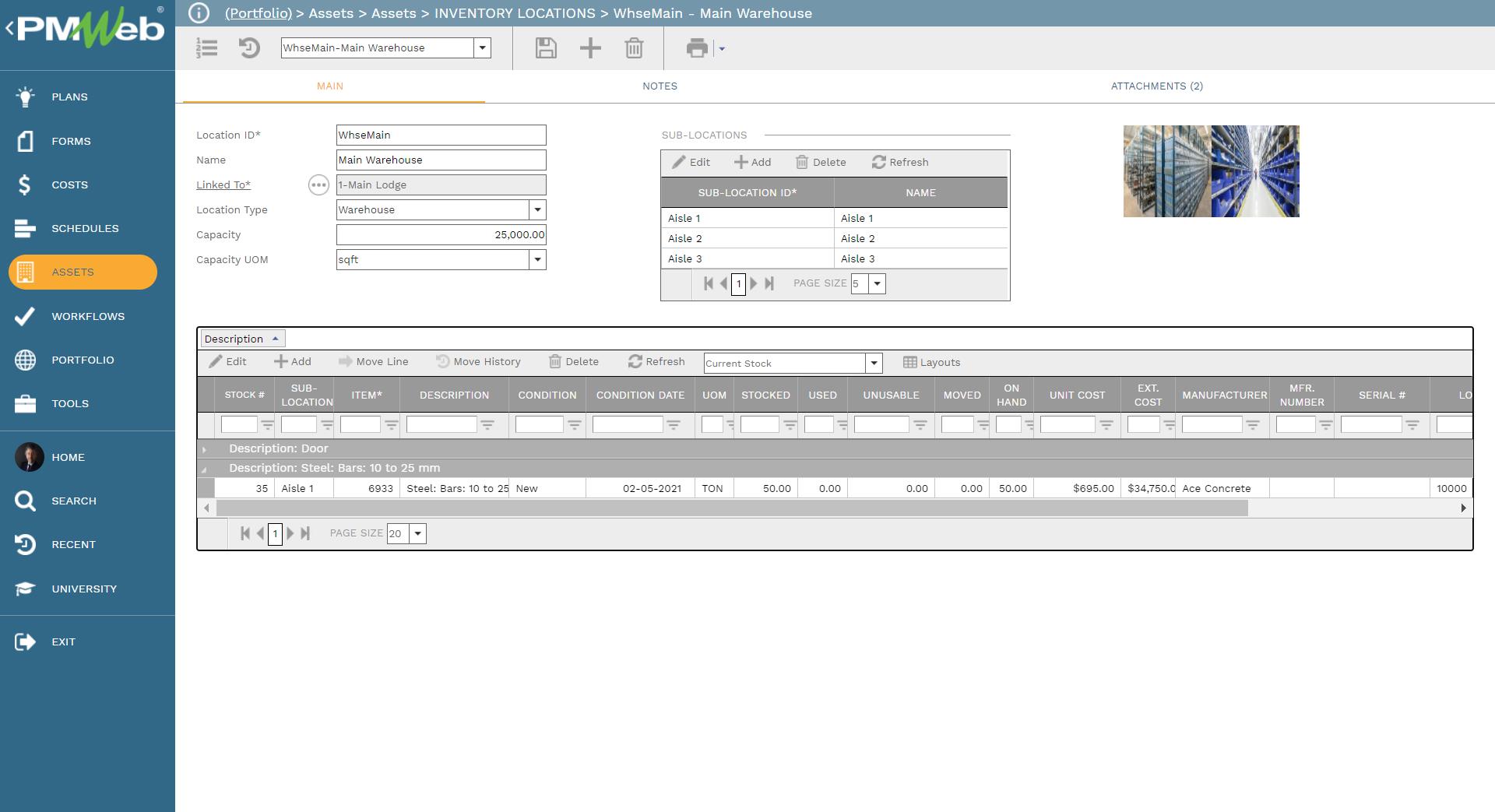
As the project progresses, the delivered or equipment can be moved to the construction project, another storage location, or returned or thrown if was unusable. There could be one or more movements based on what is needed. For each type of move, the user needs to provide the movement date, quantity to be moved, new location, type of movement, and notes on what has been moved.
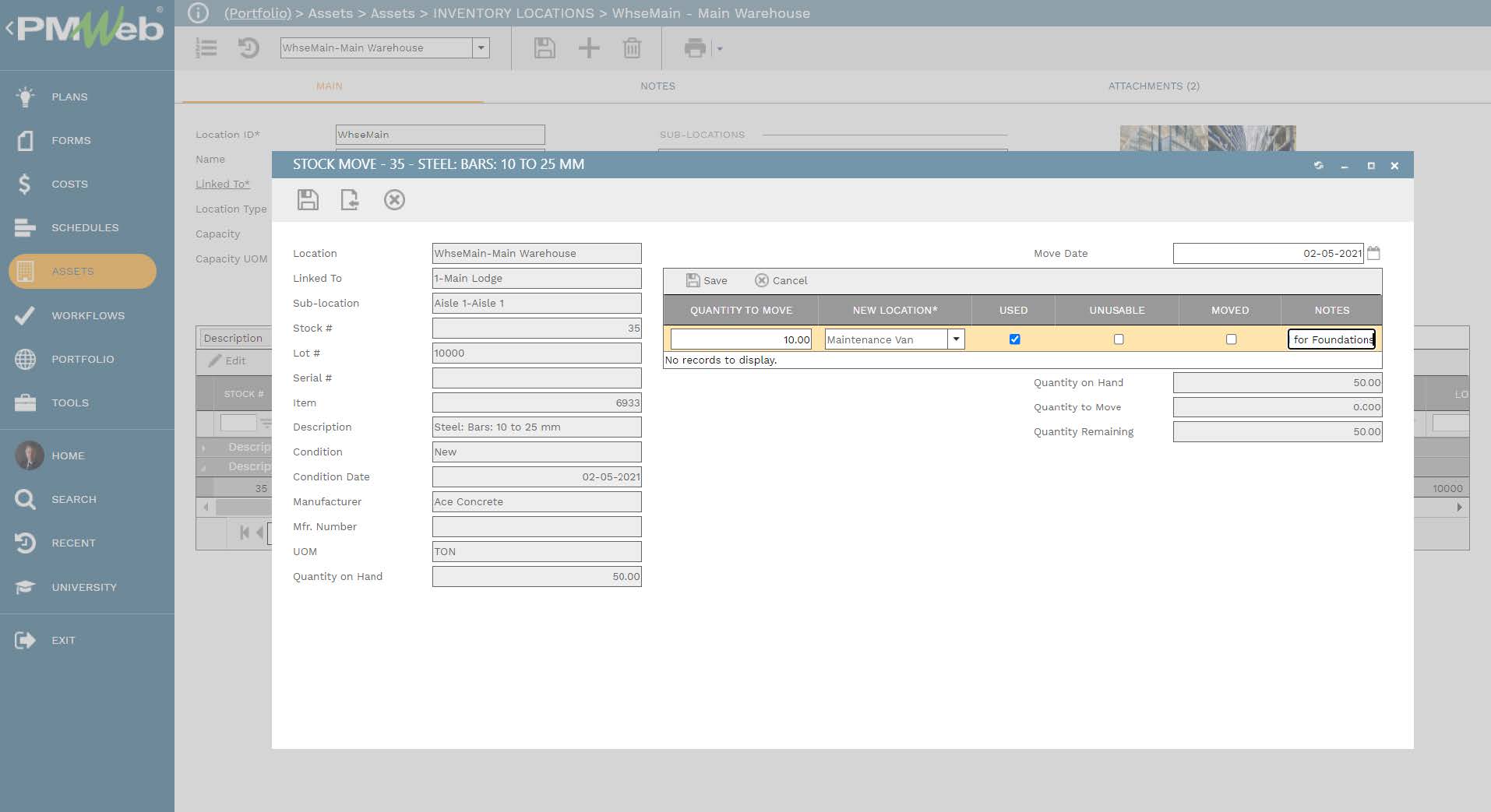
PMWeb will update the material and equipment quantities to reflect the stock movement details. The remain material or equipment stock will be displayed in the “On-Hand” field. In addition, the columns labeled “Used”, “Unusable” and “Moved” will be automatically updated to reflects the inventory move. PMWeb allows filtering the list of material and equipment inventory to show either “Current Stock”, “Past Stock” or “Current and Past Stock”.
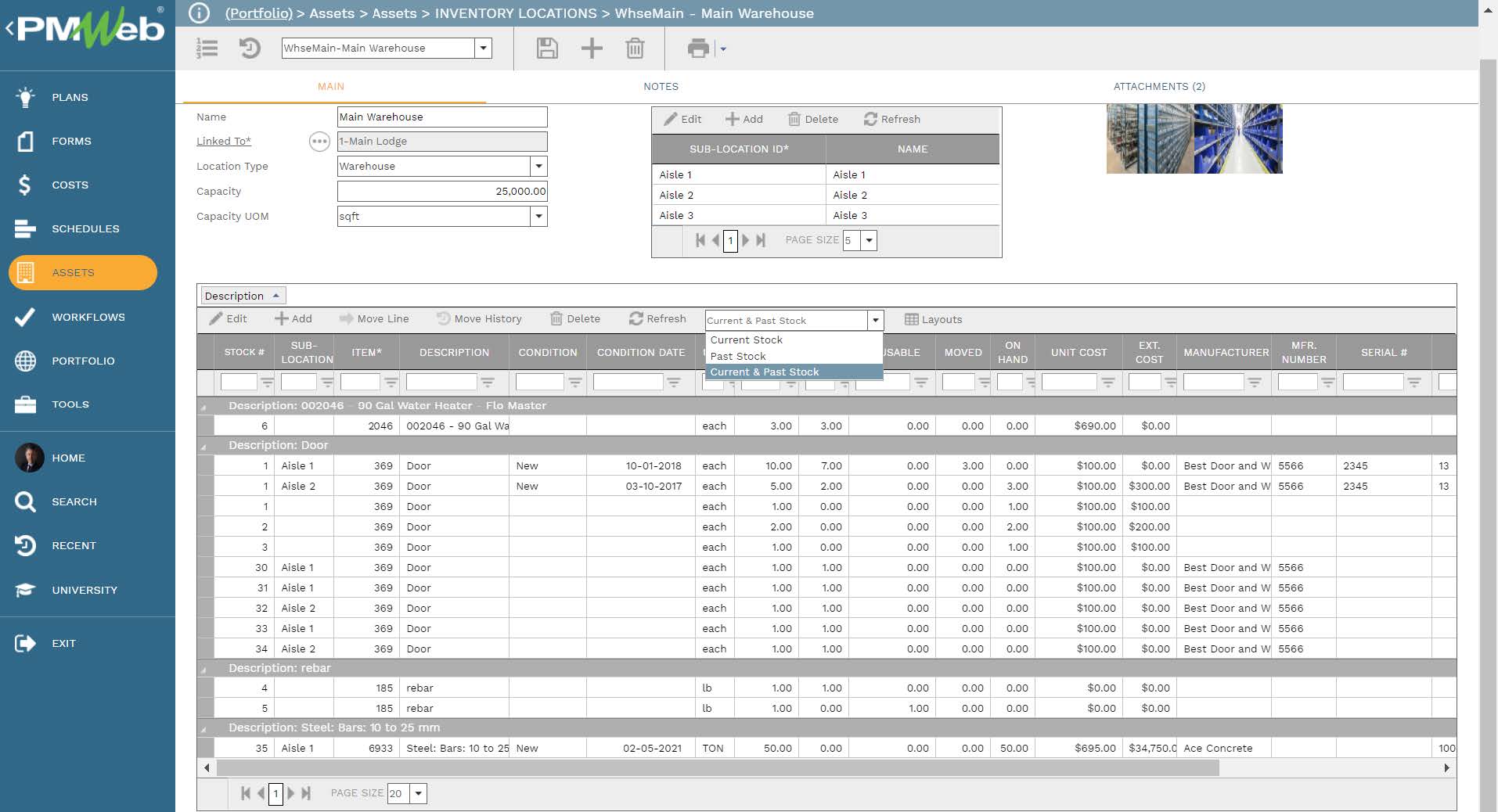
In case there is a need to check the move history of any specific material or equipment, the user needs to click on the “Move History” buttons for which will show the complete history of items moved. The table will display the moved quantity, the moved to location, whether it was classified as used, unusable, or moved, notes made, and movement date.
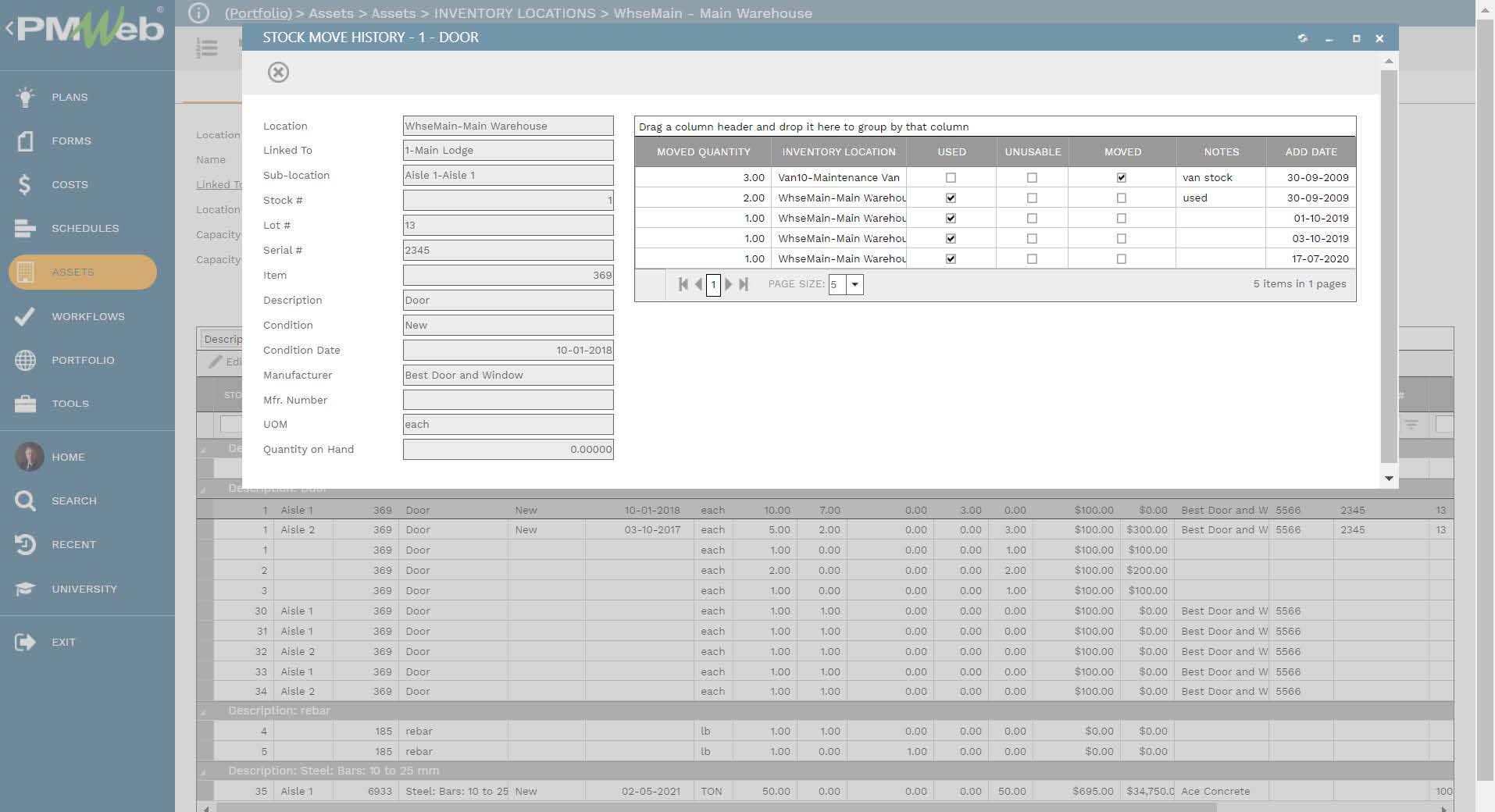
For all those transactions, whether it was when the storage location was created, material and equipment stocks were added as well as moved, supportive documents and pictures need to be attached to the inventory location. In addition, links to relevant PMWeb records or transactions for other PMWeb business processes like those for Work Inspection Requests, Submittal, Transmittal, Purchase Orders among others be added.
It is highly recommended that all supportive documents required for those transactions are uploaded and stored in their designated folder or subfolder created in the PMWeb document repository. This will enable setting permission rights to restrict access to those folders or subfolders.
